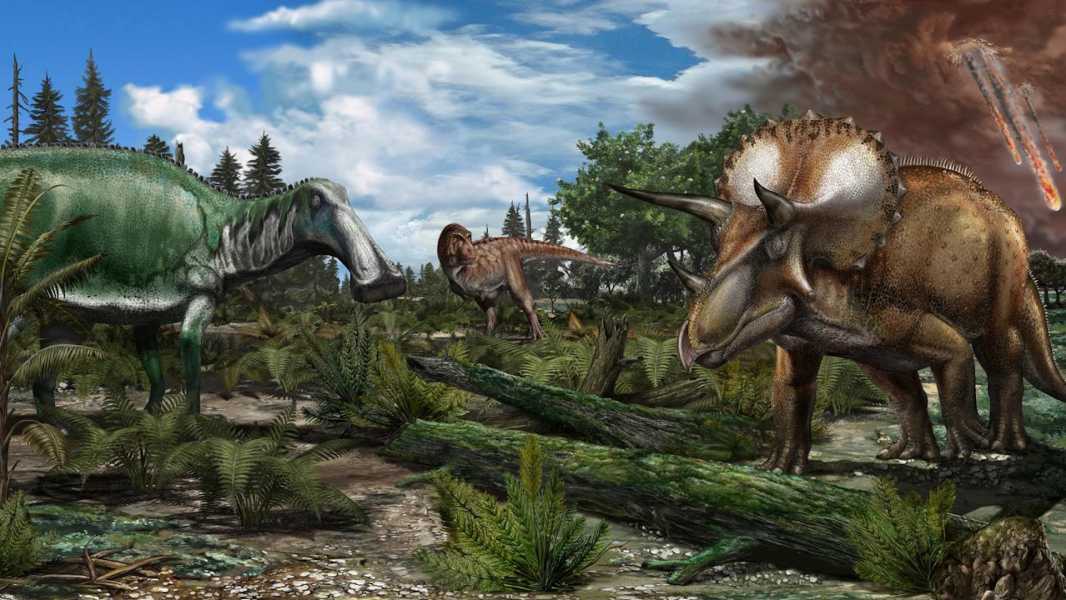
An illustration of dinosaurs — Edmontosaurus annectens (left), Tyrannosaurus rex and Triceratops prorsus — on a floodplain from the late Maastrichtian, about 66 million years ago. A new study suggests that unfavorable or undetected conditions for fossils may explain the paucity and diversity of dinosaur fossils from the pre-extinction era. (Photo credit: Davide Bonadonna)
Scientists say dinosaurs weren't in decline when an asteroid slammed into Earth and wiped them out. Instead, the idea that dinosaur diversity declined before the asteroid hit 66 million years ago is likely based on faulty fossil data, according to a study that analyzed nearly 18 million years of fossil evidence.
Fossil discoveries have long suggested that dinosaur numbers and diversity were declining before the asteroid strike at the end of the Cretaceous period. Some researchers previously believed that this was a sign that dinosaurs were already on the path to extinction before the catastrophic impact. However, this idea has been the subject of debate, with other researchers arguing that dinosaur diversity was healthy at the time of their extinction.
“This has been debated for over 30 years – were dinosaurs doomed and already extinct before the asteroid hit?” said lead study author Chris Dean, a palaeontologist at University College London.
A new study published Tuesday (April 8) in the journal Current Biology suggests that the apparent rarity of dinosaurs before their extinction may simply be a consequence of a poor fossil record.
The scientists examined a record of about 8,000 fossils from North America dating from the Campanian (83.6 to 72.1 million years ago) and Maastrichtian (72.1 to 66 million years ago), focusing on four families: Ankylosauridae, Ceratopsidae, Hadrosauridae and Tyrannosauridae.
At first glance, their analysis showed that dinosaur diversity peaked about 76 million years ago and then declined until an asteroid strike wiped out the non-avian dinosaurs. This trend was even more pronounced in the 6 million years before the mass extinction, when the number of fossils of all four families in the geologic record declined.

A graphic illustration of a new study showing the passage of time in North America, as well as the methods used to estimate fossil abundance.
However, the researchers found there was no evidence of environmental conditions or other factors that could explain
Sourse: www.livescience.com





